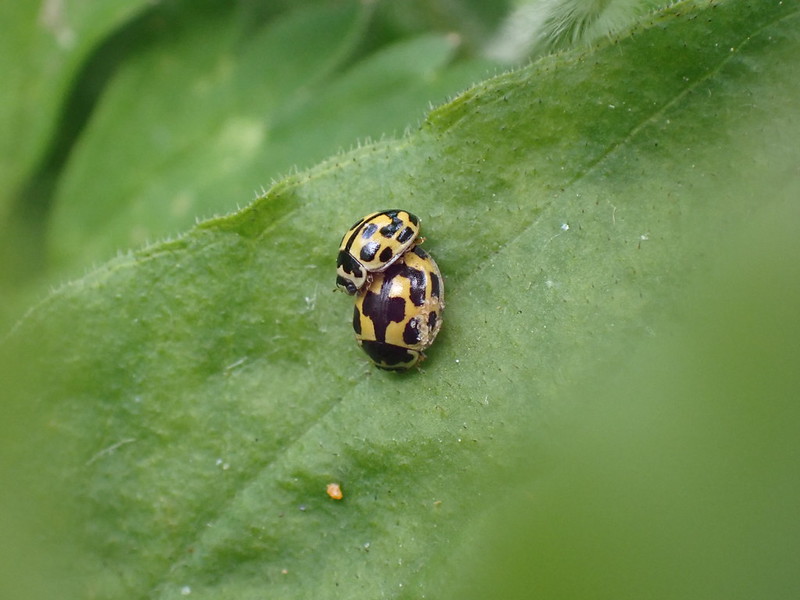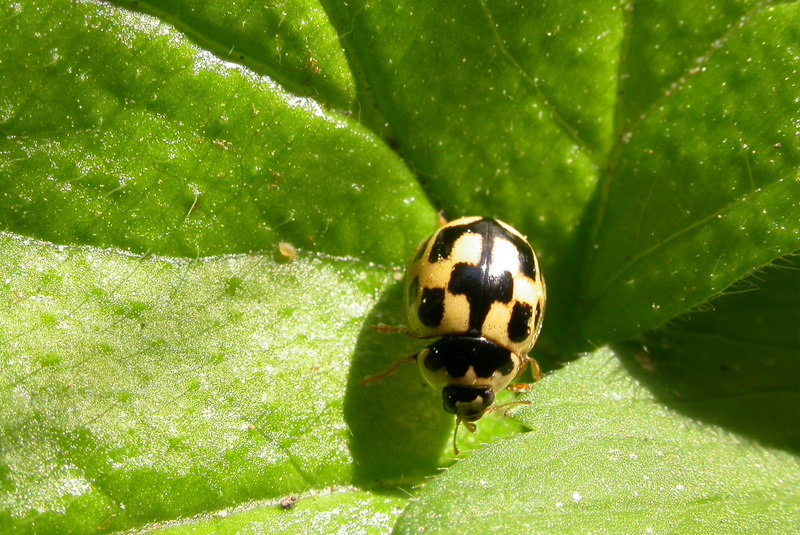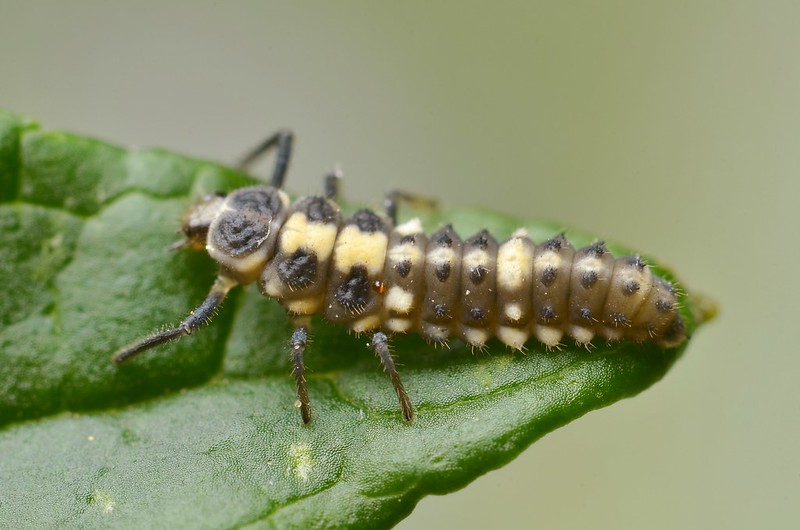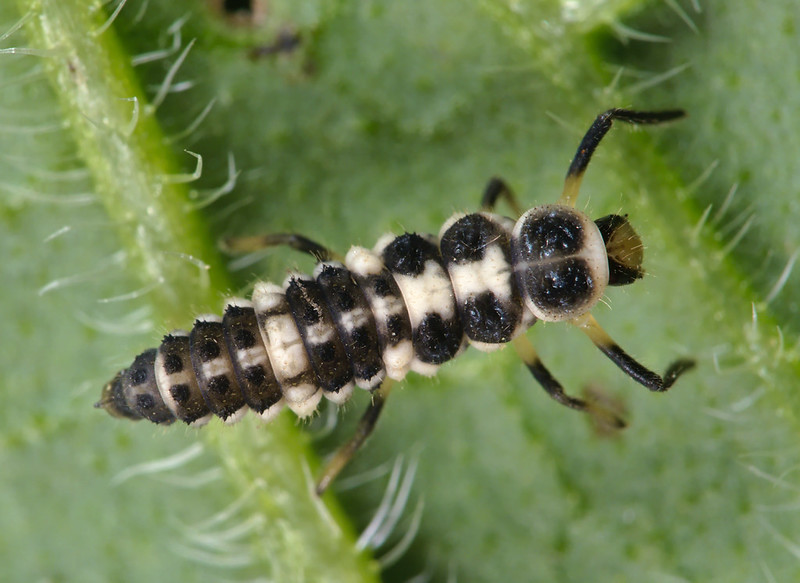The 14-spot Ladybird is a yellow ladybird with distinctive rectangular black spots, often fused together.
Fast facts
- Common name(s)
- 14-spot Ladybird
- Scientific name
- Propylea quattuordecimounctata
- When to see it
- Year round
- Diet
- Aphids
Description
The 14-spot Ladybird is a yellow ladybird with distinctive rectangular black spots that are commonly fused together. This species is found in many habitats including grassland, mature woodland and agricultural land.
Identification
Adults
Adults have yellow elytra (wing case) with distinctive rectangular black spots. These spots are commonly fused together and so the black markings can be extensive. Some of these fused spots can form a distinctive ‘smiley face’ marking in the middle of the body. The pronotum (behind the head) is yellow or cream with black spots. These black spots can be fused to become trapezium- or ‘crown’-shaped. Its legs are brown. This species is 3.5mm to 4.5mm in length.
Larvae
The late-stage larvae have long legs and distinctive markings. The body is largely grey-brown with cream patches on the body. There are also cream markings running down the middle of the body.
Pupae
The pupae are pale brown. There are darker markings on the thorax and abdomen. There is also a band of yellow-cream spots.
Similar species
The 22-spot Ladybird is another yellow ladybird species. However, the 22-spot Ladybird is brighter yellow, its spots more circular in shape and rarely fused together. The 22-spot Ladybird is a target species of the North East Ladybird Spot and its species profile can be found here.
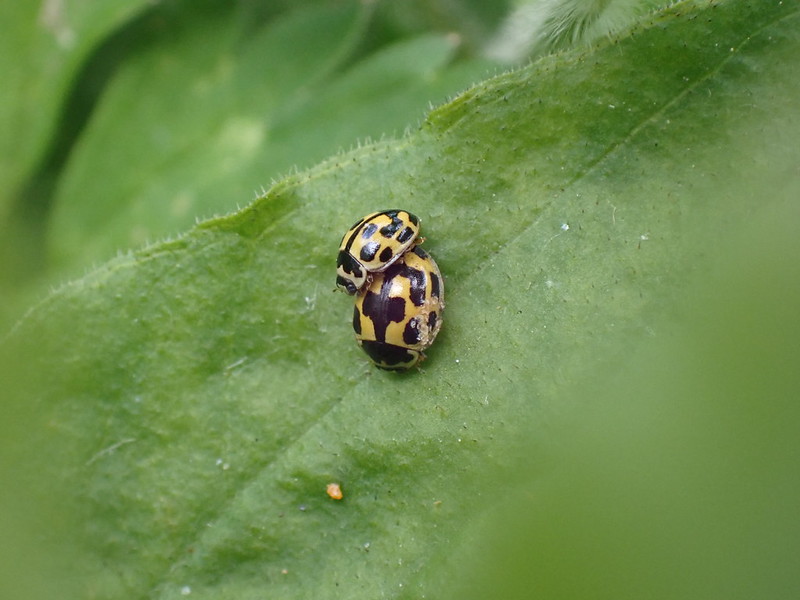
Spotted this ladybird?
Share your sighting of the 22-spot Ladybird and other North East Ladybird Spot target species to contribute to the conservation and study of our region’s ladybirds.
Did you know?
The 14-spot Ladybird is sometimes referred to as the ‘dormouse ladybird’ because it emerges from overwintering later than many other ladybird species.
Ecology
This species feeds on aphids and is commonly found on low herbaceous vegetation. The 14-spot Ladybird occupies a great range of habitats including grassland, mature woodland and scrub. It is also commonly found on crops and is considered a very important aphid predator in agriculture. In gardens, roses, cultivated beans and Blackcurrant are popular host plants.
The 14-spot Ladybird commonly overwinters on low herbage.
Regional Distribution
The 14-spot Ladybird is found in Northumberland and County Durham with fewer records further north in Northumberland and upland areas. Nationally, this species is one of the commonest ladybirds but with few Scottish records.
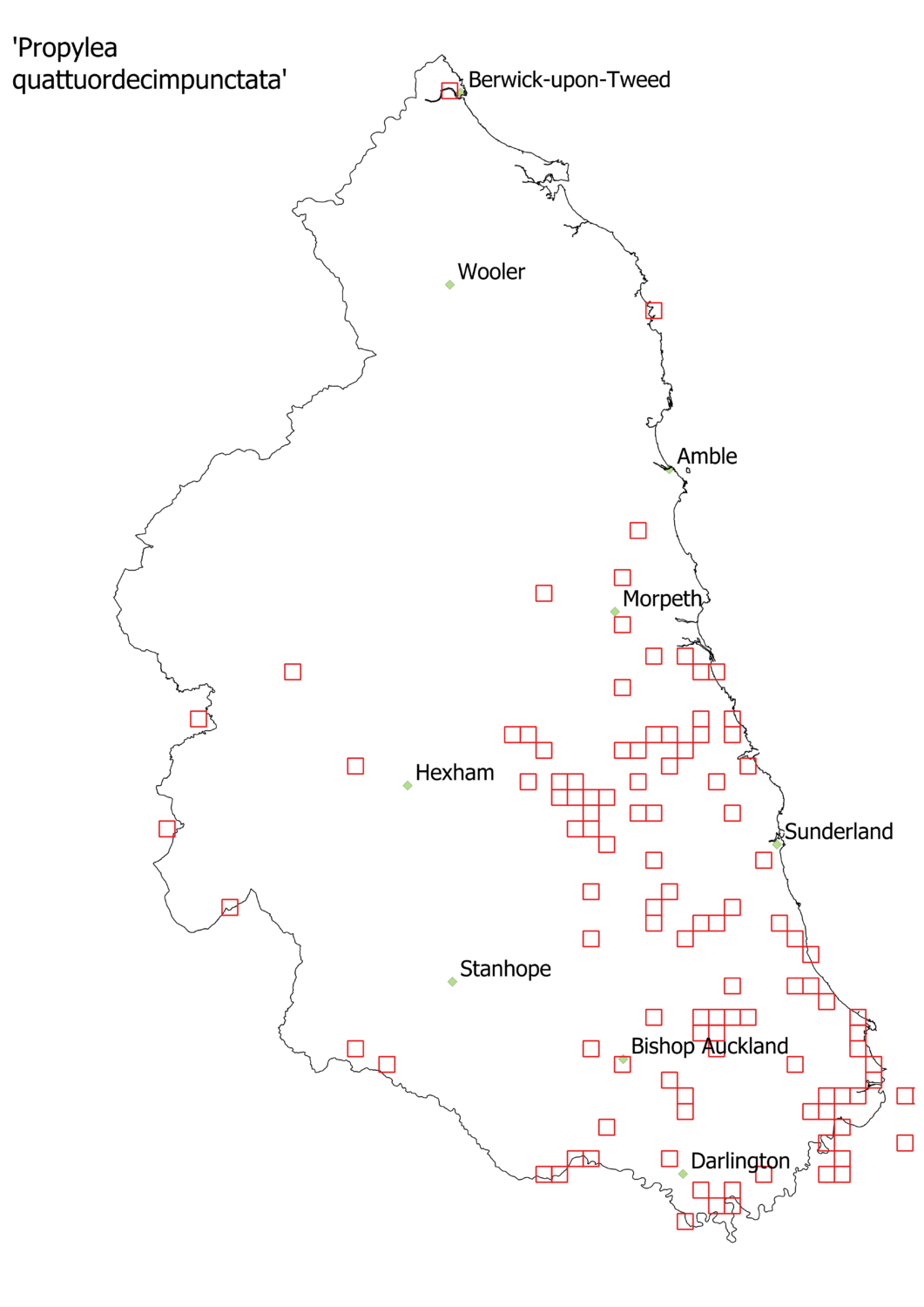
Distribution map of 14-spot Ladybird (ERIC North East data)
